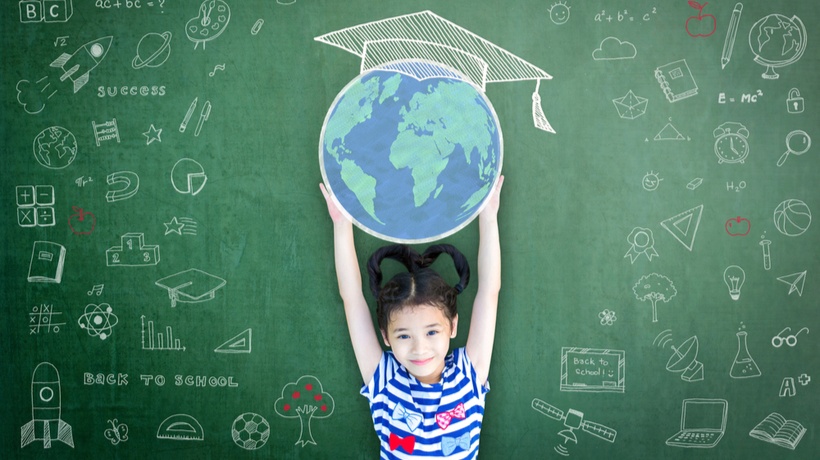Technology And eLearning Are Helpful Tools In Multilingual Education
International Mother Language Day is celebrated every year on February 21. The idea for this International Day came from Bangladesh, and it highlights the importance of everyone's mother language, as well as multilingualism, to build sustainable and inclusive societies. Languages also foster stronger cultures and knowledge sharing, which makes it even more vital that they are preserved. Sadly, 40% of the global population doesn't have an education in a language they speak or understand.
This Year's International Mother Language Day
This year is the 24th annual celebration of the Day. The theme for 2023 is "multilingual education—a necessity to transform education." It highlights how multilingual education can be enhanced to transform education in general, as well as how to support learning in that context. Multilingual education is a hope for linguistic diversity. Students begin education in the language that they are more comfortable with and then move forward to exploring other languages, which gives them the opportunity to learn the material in a familiar language so that they're better able to assimilate information.
Which eLearning And Technology Tools Can Help Students?
eLearning Platforms
Asynchronous learning platforms offer major flexibility, as people can attend lessons at their own pace and are given the freedom to set their own schedules. This is ideal for multilingual education because it is accessible to everyone, no matter the time difference or cultural specificities. Flexibility also applies to teachers. They have access to data regarding students' performance, and they can adjust lessons accordingly. Some teaching professionals may also live in countries that speak the learners' mother tongue, so it's better for them to teach whenever it's most convenient.
Language Apps
Language apps have become even more popular since the pandemic started. In fact, it's common for some indigenous languages to have more people learning them through apps than native speakers. This form of language learning, although informal, helps to raise awareness of languages that are in danger of extinction. Plus, when people learn a new language, they familiarize themselves with the culture it fosters. It's also beneficial for people who live in countries where their mother tongue isn't spoken. They can open the app, practice their writing and speaking skills, and be more in touch with their cultural identities.
Video Streaming Services
Platforms that let you stream your favorite series and movies can be effective in language learning, too. Those platforms have a global audience and, thus, include audio translation and subtitles in many languages. Even if the language of a show or movie is familiar, they can change the audio to their mother tongue, or, if not available, they switch on the subtitles. This way, they also learn about differences in meanings, idioms, and other language nuances.
Translation Through Artificial Intelligence
Though Artificial Intelligence (AI) is still in its infancy in many respects, AI translation software can give learners the ability to translate text (including text in images) with greater accuracy. Updated AI mechanisms can translate idioms in relatable ways, which bridges the gap between languages to optimize multilingual learning.
Virtual And Augmented Reality
Augmented Reality (AR) and Virtual Reality (VR) can both be applied in multilingual education. However, they work in different ways. The former uses digital content as an overlay to the real world, while the latter immerses the user in a digital world. How do they help multilingual education? Well, first of all, as their definitions suggest, they immerse the learner in certain environments that can be custom-tailored for language learning. For example, AR through mobile apps is proven to assist in vocabulary retention. Specifically, AR exercise cards can boost learners' performances and strengthen their memory. On the other hand, VR puts students in realistic environments where they can practice a language; for instance, by speaking with avatars that represent native speakers.
Awareness Through Social Media
Social media platforms tend to create social movements and raise awareness. Platforms like TikTok and Instagram, which have the most activity between ages 18–34, usually shed light on important matters like indigenous languages or cultures that are in danger of extinction through user-generated content. Users often highlight the importance of heritage and the celebration of different cultures. This creates more awareness of the importance of language diversity and prompts people to embrace their mother language and connect with other native speakers.
Challenges Multilingual Education Faces
Limited Internet Access
Not everything goes smoothly when it comes to technology on a global scale, and that can have a direct impact on multilingual educational pursuits. For example, developing countries may not have access to tech equipment or stable internet connections. As such, efforts are ongoing to allow greater internet access in those countries and help them connect with the rest of the world. International Mother Language Day is a great opportunity to shed light on this concern.
Limited Tech Training Or Resources
Teachers and professionals also need to be trained to use technology in order to help their students get familiar with those tools in turn. Many still resort to more traditional media for their education, like television, radio, and DVD or VHS. Those methods can be effective, considering the circumstances, but modern technology can help them transform their educational initiatives.
Conclusion
Modern times have created multilingual and multicultural societies. However, this makes the protection of language diversity a more urgent matter. Technology and eLearning, when used to their maximum potential, can be very powerful in preserving languages and spreading knowledge. This International Mother Language Day, it's important to remember that every language has its own culture and the people who speak it carry on its legacy.
Check out our directory of eLearning Translation Providers to find the right outsourcing partner for your multilingual education program.






